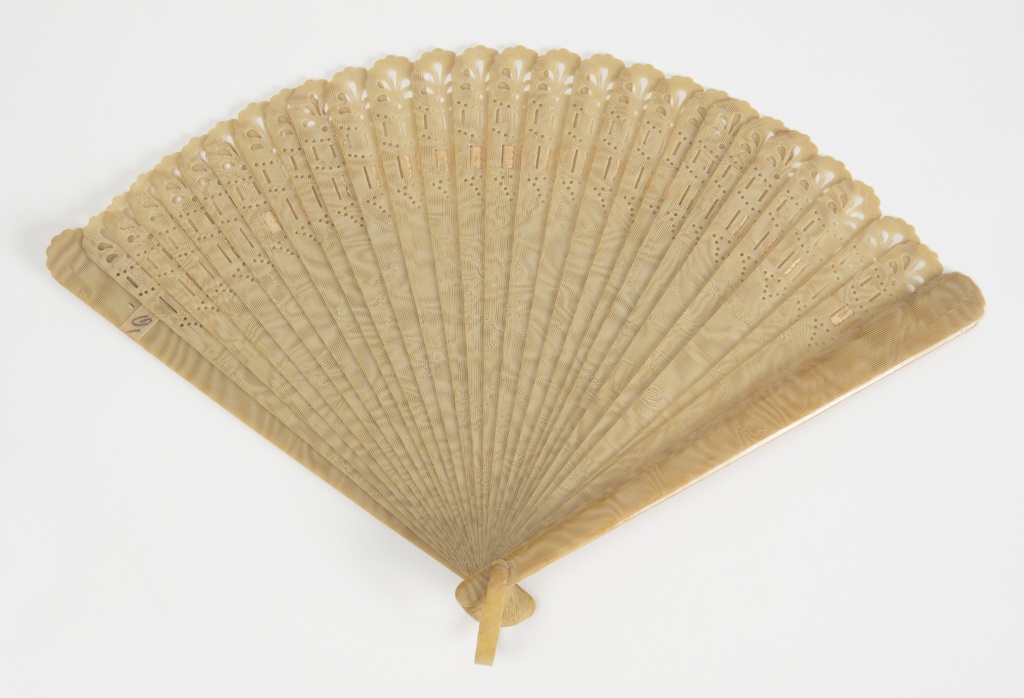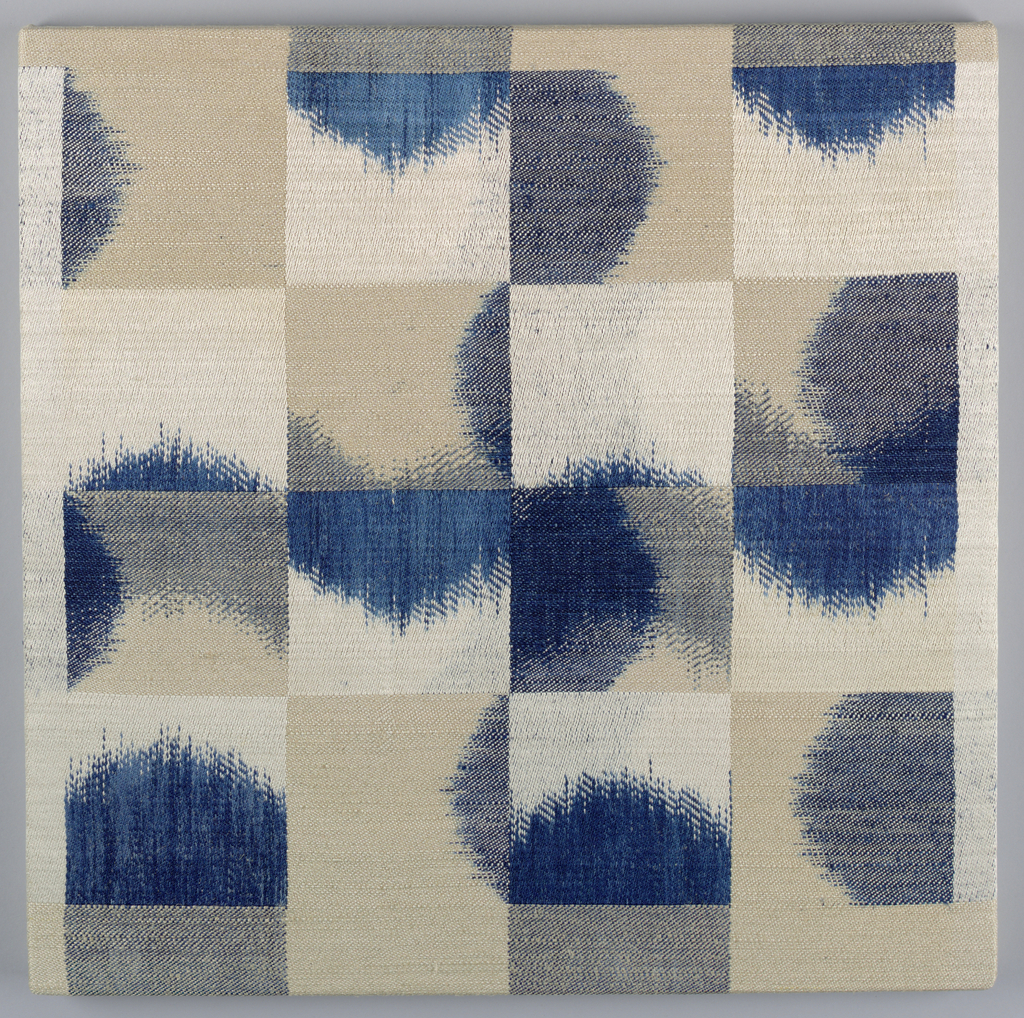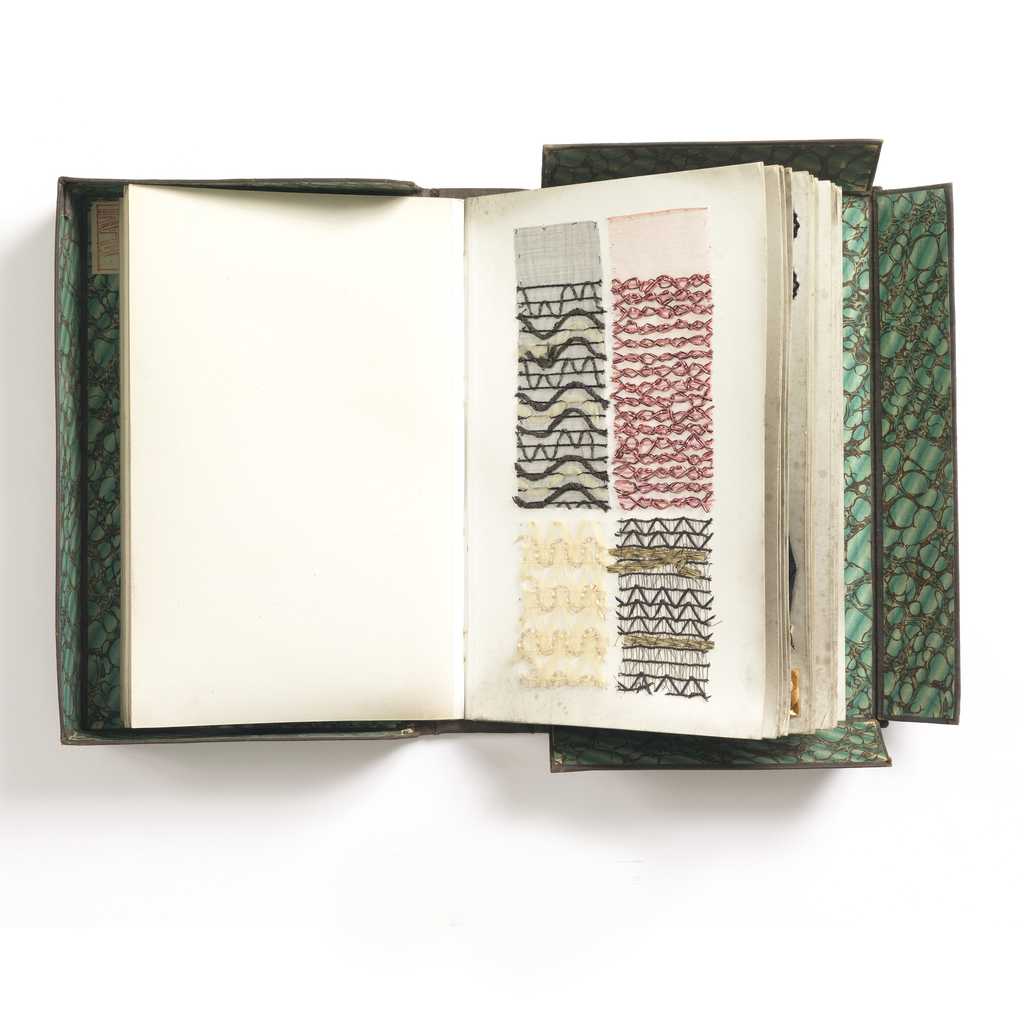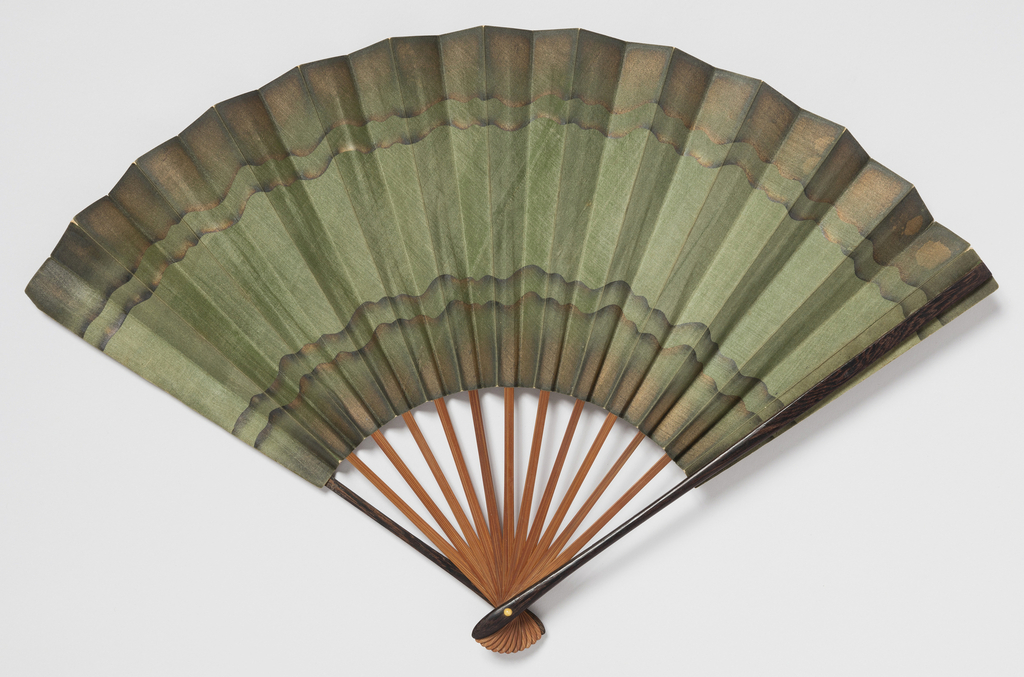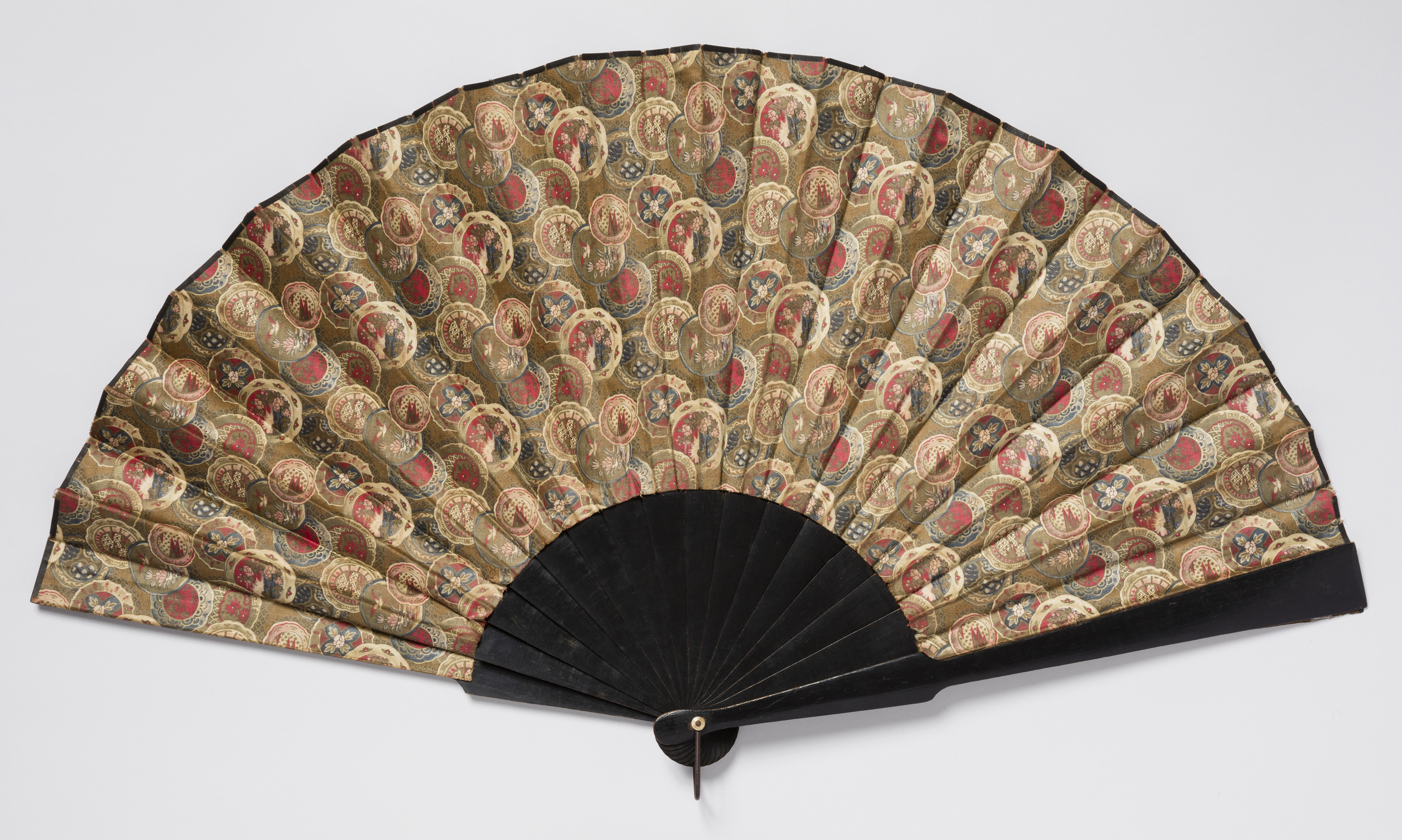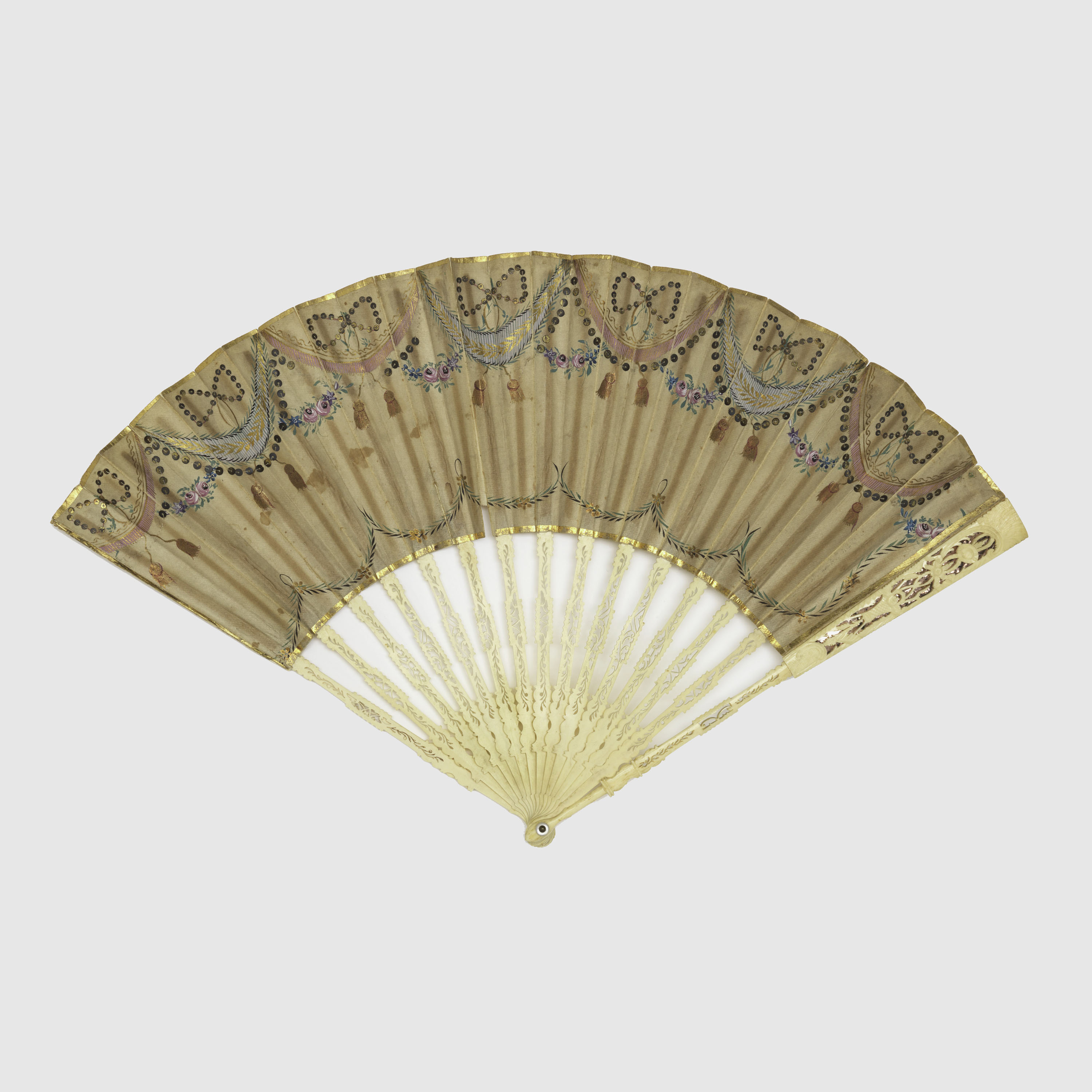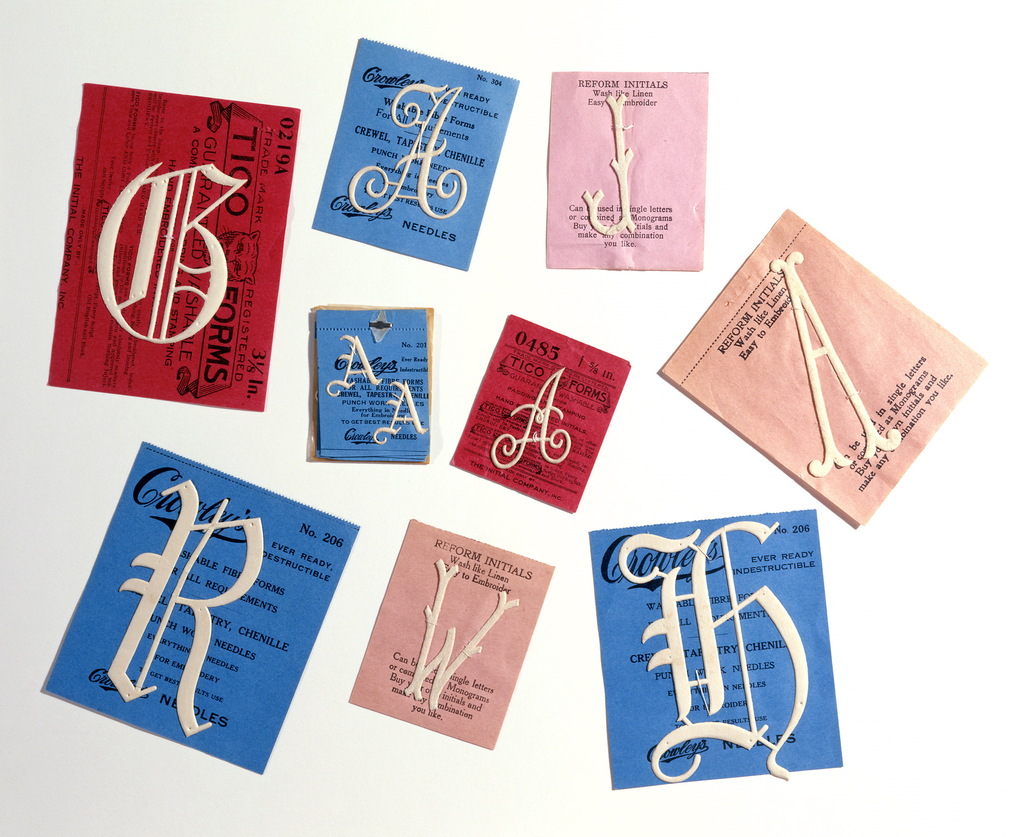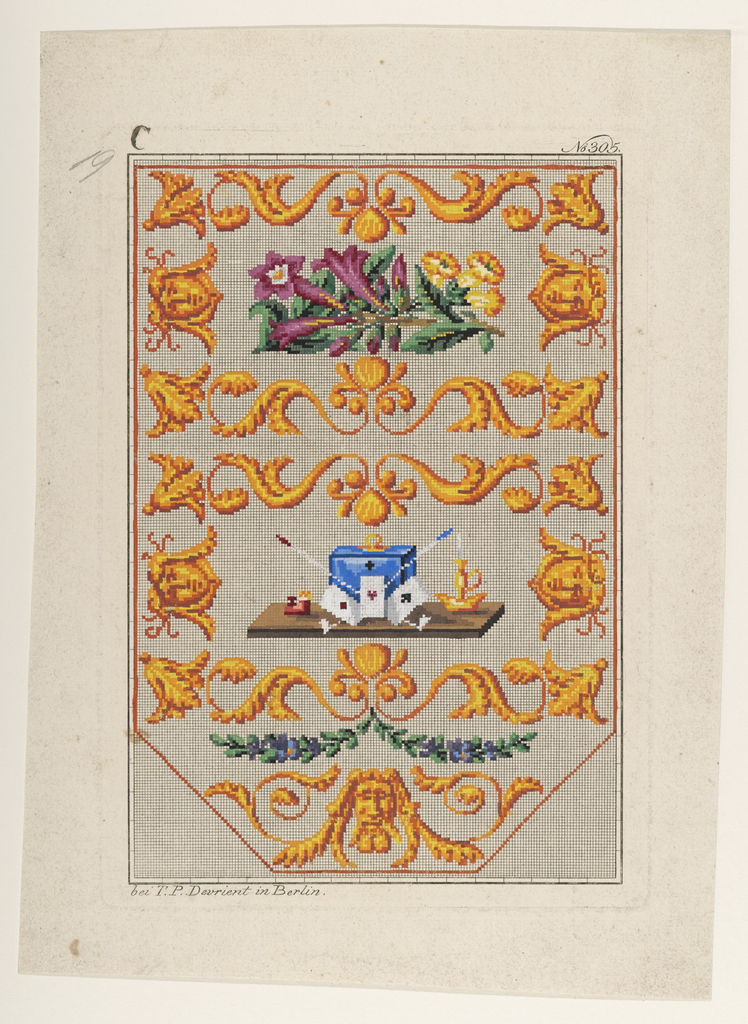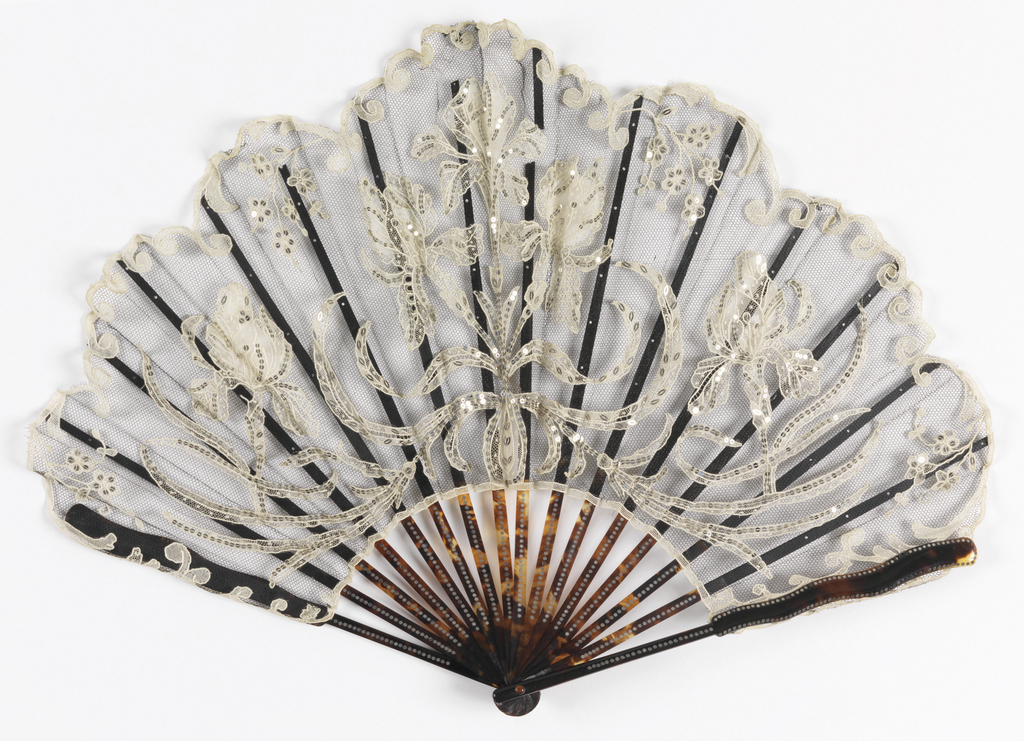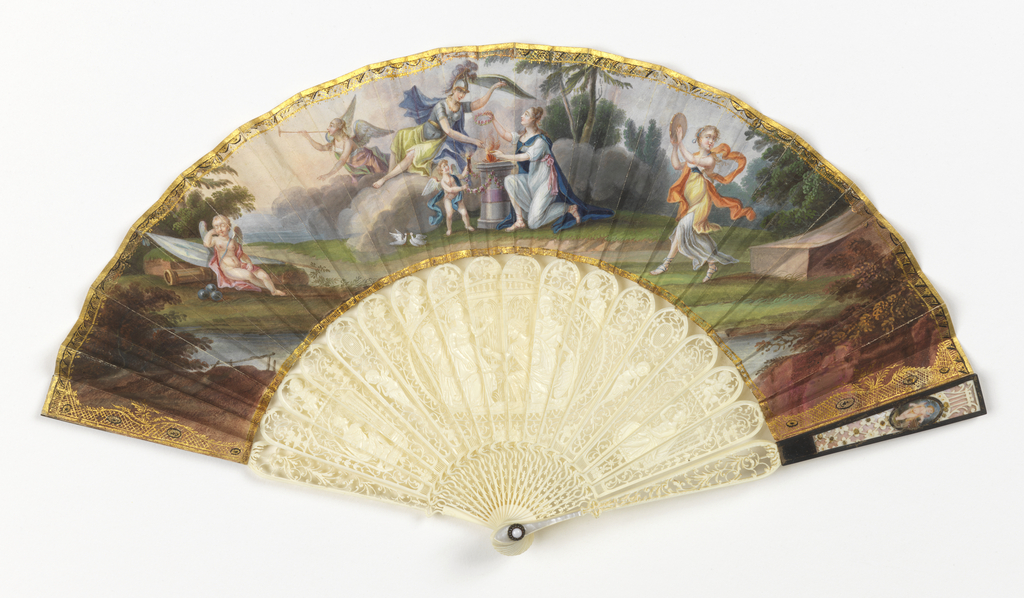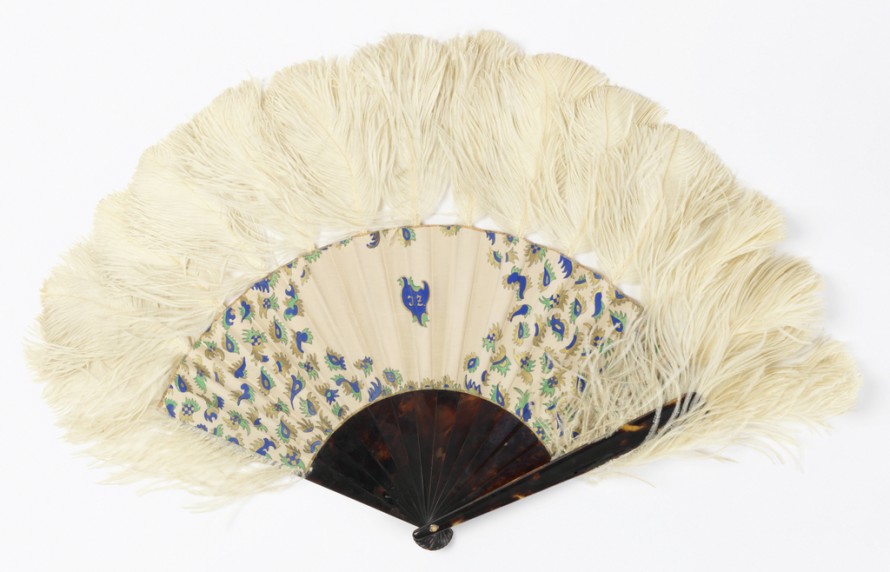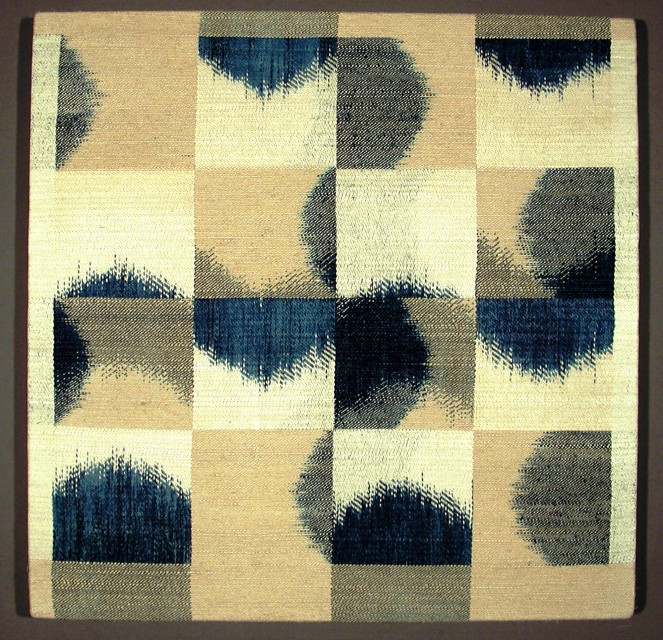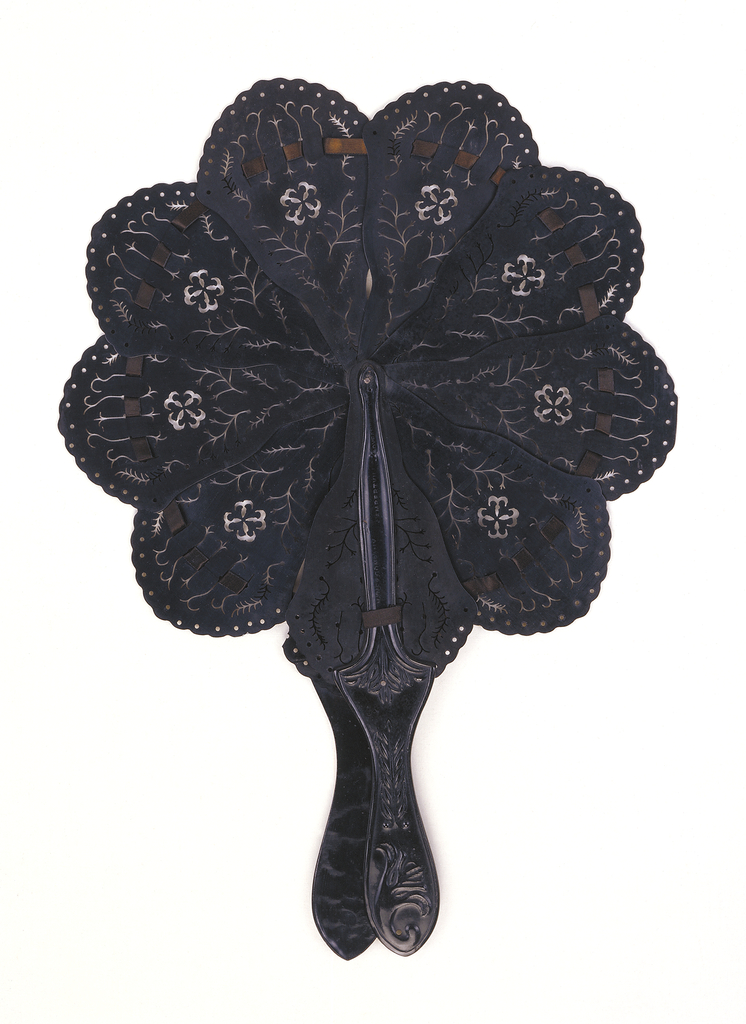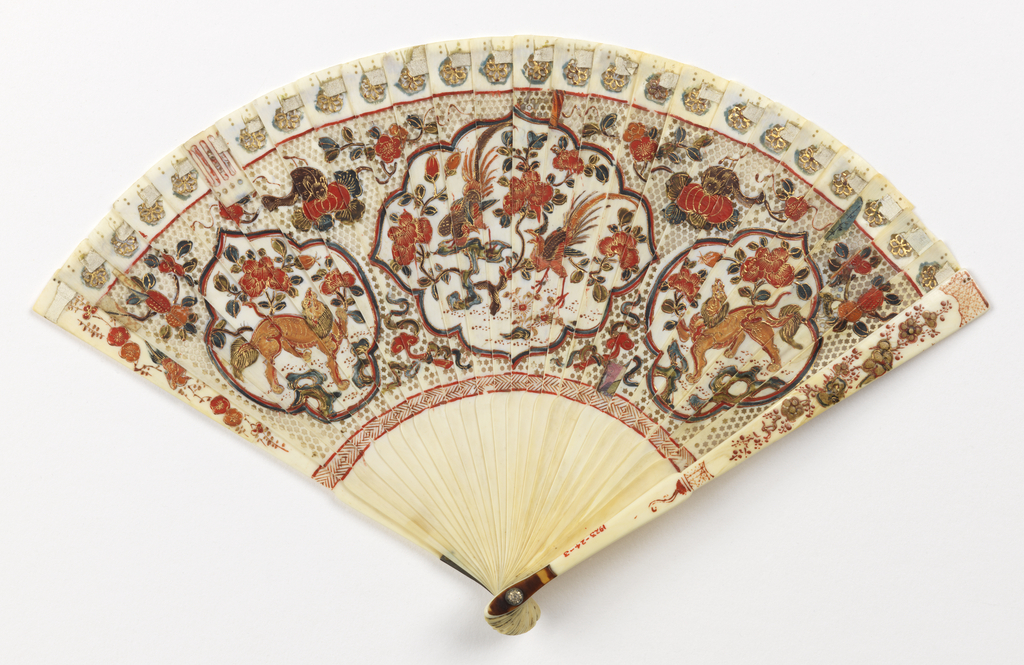This fan is in “good” condition for cellulose nitrate and therefore a rarity. Cellulose nitrate is an early plastic polymer invented in the mid-nineteenth century and derived from cellulose that is treated with nitric acid. The material gradually degrades, releasing nitric acid. This fan documents a time of experimentation when substitutions for costly natural materials,...
In celebration of Women’s History Month, March Object of the Day posts highlight women designers in the collection. Today’s blog post was written by Lucy Commoner and originally published February 17, 2013. Ethel Stein died this month at 100. Cooper Hewitt, Smithsonian Design Museum is fortunate to have in its collection three textiles designed and...
Sample books, originally created for commercial, educational, or scientific purposes, have become valuable guides to understanding the products, technological processes, materials, aesthetics, provenance, and use of objects manufactured in the past. Both the Museum and Design Library have extensive collections of sample books containing diverse groups of samples ranging from paint chips to lace. This...
This elegant fan appears to be from the Meiji, or late Edo (mid-19th century) era, although its high quality sets it apart from standard export wares. It is meticulously crafted, with a subtle hand-painted leaf. Unusual for a Japanese folding fan, the front leaf is constructed of very finely plain-woven silk adhered to a paper...
This folding fan dating from the 1880’s-90’s is a perfect example of the expression of the Aesthetic Movement in costume accessories. Fans and the Aesthetic Movement are deeply intertwined. The Aesthetic style was strongly influenced by the decorative arts of Asia, where fans originated. During the late 19th century, Asian fans, particularly from Japan, were...
This finely painted paper fan exemplifies the simpler styles of the Directoire period and the effects of the French Revolution in 1789. The period 1789-1800 is characterized by a radical change in fashion: the excesses of the pre-revolutionary period were rejected for simpler designs and humbler materials. Earlier 18th century fans were elaborate in design...
The numbers, letters, and monograms taught and illustrated in manuals and pattern books were used by a wide variety of craftsmen, including engravers, wood carvers, painters, and embroiderers—as seen in samplers and in other forms of domestic embroidery. A twentieth-century example shows an intermediate step between hand and machine embroidery: felt embroidery forms of the alphabet, such as those distributed through Crowley’s Department store in Detroit, were used as a raised guide, to be covered with embroidered stitches for the embellishment of household linens.
The first pattern books documenting textile design motifs were published in the first quarter of the sixteenth century, and their proliferation into the nineteenth century allowed the wide dissemination of motifs and patterns used in samplers and other types of embroidery. Eventually, by the nineteenth century, embroidery patterns printed directly onto the foundation fabric were...
This beautiful folding fan is one of a pair of similar fans in the Art Nouveau style in the collection of Cooper-Hewitt, National Design Museum. The silk net leaves of both fans are decorated with cotton needle and bobbin lace embellished with shiny steel spangles. The sticks are identical in both fans and are made...
This rare and beautifully painted fan dates from the early nineteenth century, a period when smaller fans became fashionable. Cooper-Hewitt, National Design Museum’s collection includes other small fans of the early nineteenth century that are often made of spangled silk and net, such as this delicate fan from 1805-1810: Folding Pleated Fan. France, 1805-1810. Gift...
Of the 300 folding fans in the Cooper-Hewitt, Nation Design Museum’s collection, very few have as fascinating a provenance as this beautiful fan designed by the artist Simon Lissim (1900-1981). Lissim was a prolific painter, stage designer, illustrator, metalwork designer, ceramicist, and textile designer whose works are found in the collections of over 70 museums...
Cooper-Hewitt, National Design Museum is fortunate to have in its collection three textiles designed and woven by Ethel Stein, a preeminent twentieth and twenty-first century American artist and weaver. Stein’s early design influences include studying in the 1940s with the Bauhaus artist and designer, Josef Albers (1888-1976) http://en.wikipedia.org/wiki/Josef_Albers . The threads of Albers teaching appear...
At first glance, it is difficult to know how to identify the material composition of this folding fan. The material is black and stiff with a drilled pattern of open decorative elements and a raised design on the handle. On closer examination, the words, “Man’f Company Lambertville Goodyear Patent” can be seen stamped into the...
This rare, early 18th-century Chinese fan for the Dutch market is a wonderful example of the many interconnections through time that can be extracted from an object around its design, technical details, and state of preservation. The fan itself is emblematic of the history of fan design, which originated in the Orient and arrived in...
